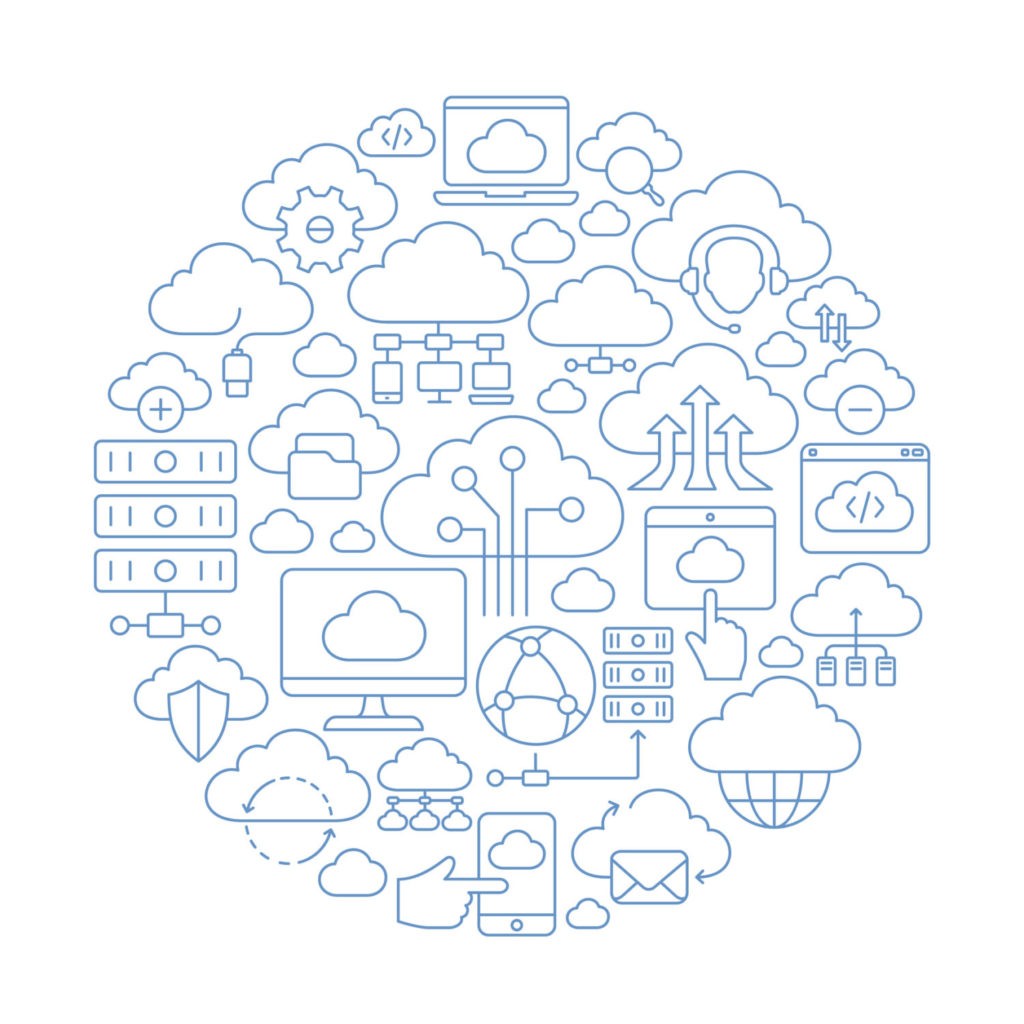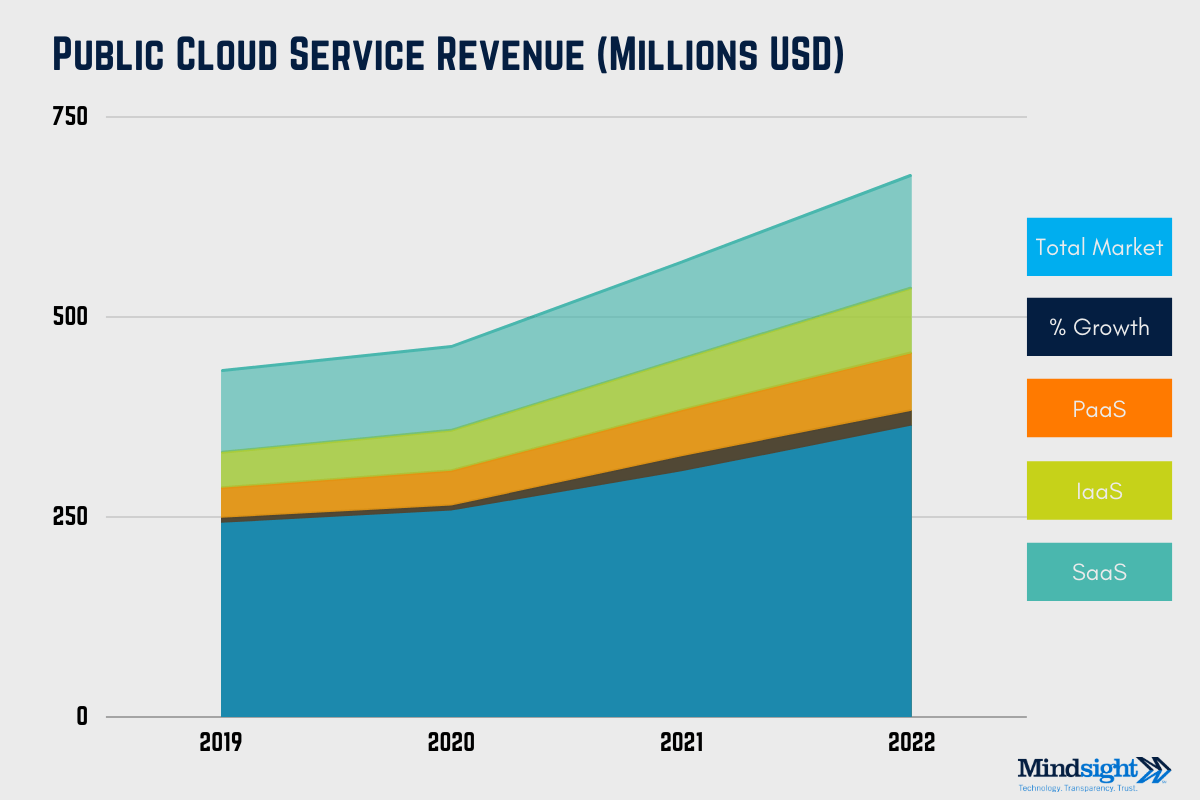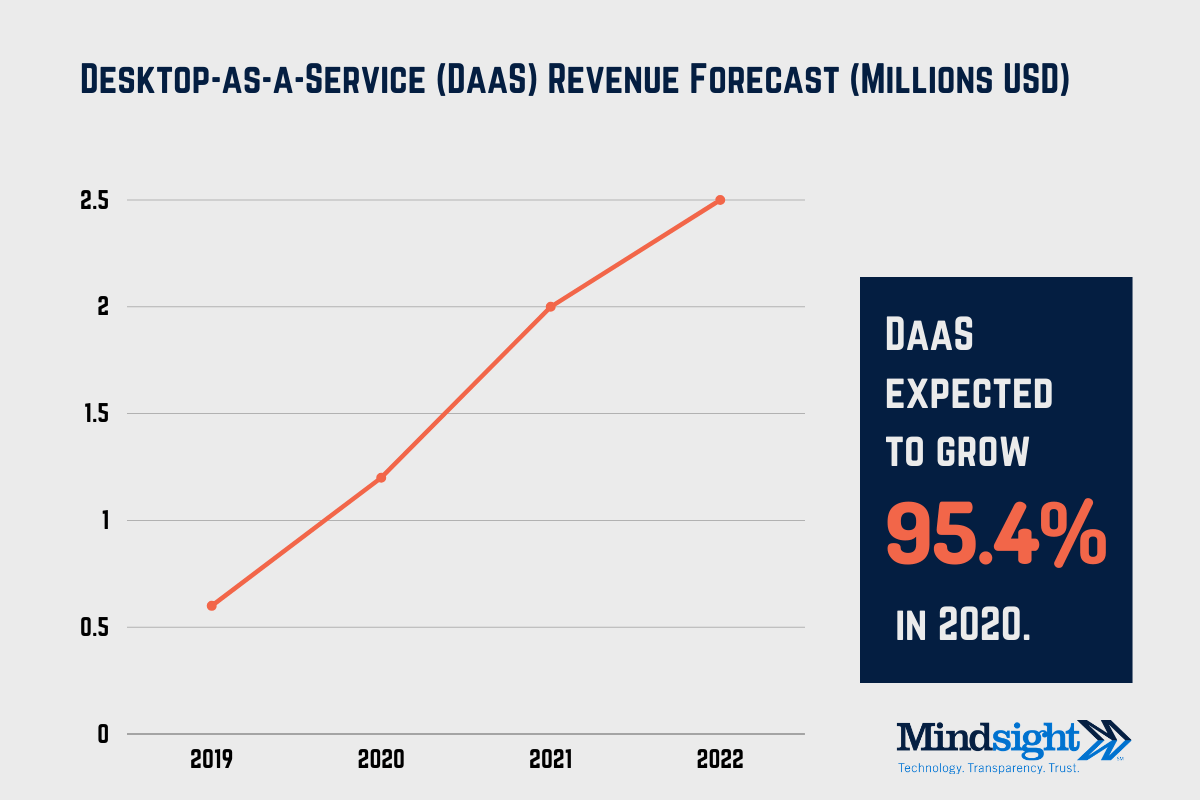August 13, 2020 by Siobhan Climer and Mike Czerniak
Despite its reputation as the ultimate disruptor, cloud computing has been around – in one form or another – since before the Internet itself. The cloud symbol was used as early as 1977 in the original ARPANET, and its metaphorical representation has endured.

The Evolution Of Cloud Computing
In the late 2000s and into the 2010s, cloud computing was primarily discussed from a hosting position. Companies either migrated to a private cloud, public cloud, or a hybrid cloud model of computing.
Today, hybrid cloud adoption is at 58% — and growing, and almost 90% of enterprise organizations are deploying multicloud solutions.
The rise of as-a-service capabilities shifted the conversation, so we moved into categorizing cloud computing from a functional standpoint: infrastructure-as-a-service (IaaS), platform-as-a-service (PaaS), and software-as-a-service (SaaS).
SaaS continues to dominate the market, with thousands of startups and proven companies offering a wealth of SaaS solutions. PaaS and IaaS providers are fewer in number, due the increasing involvement of the IT stack (PaaS includes the application layer; IaaS includes OS layer).

So, what’s next? If the functional delivery mechanism of cloud technology is no longer about management, and instead revolves around straight-up accessibility, uptime, and availability, navigating on-premise vs. SaaS vs. PaaS vs. IaaS is almost a moot point.
It’s simple. The way we talk about the cloud is evolving.
What Is Everything-as-a-Service (XaaS)?
The reality is that ‘everything’ is serviceable today — that is anything in the IT sector can be delivered as a service via the internet. Everything-as-a-Service (XaaS) simply denotes the increasing servitization of technology.
Also known as anything-as-a-service, XaaS originated with the SaaS deployment model and now includes IaaS, PaaS, and even more functionally-specific models, such as storage-as-a-service, desktop-as-a-service (DaaS), and disaster-recovery-as-a-service (DRaaS).
Desktop-as-a-Service (DaaS) In The Modern Workspace: An Infrastructure Report
Why Is XaaS On The Rise Now?
Public cloud services are booming. The reports on the cloud computing industry are impressive. Research and Markets found that global cloud computing revenue will reach $342 billion by 2025.
This data aligns with Gartner’s latest report as well.

The overall growth and percentage growth within each segment, particularly desktop-as-a-service (shown below), shows something more interesting when considered in tandem with multicloud deployments — which are also on the rise.

Back to our initial question. Why is XaaS (and DaaS, in particular) top-of-mind today? The obvious answer is the sudden rise of remote work, brought on by the global coronavirus pandemic. In addition, a Forbes insights report noted this:
“This Everything-as-a-Service (XaaS) business model—one which has helped companies in the B2B space generate continuous revenue from their products—is being eyed by consumer companies hungry for income that lasts beyond the initial product purchase. Through “servitization”—combining products with services—businesses can innovate faster and deepen their relationships with customers by providing more value. That value includes data insights derived from IoT-powered devices—from thermostats to wind turbines.”
How Will XaaS Continue To Evolve?
Moving to an Everything-as-a-Service offers multi-faceted benefits to companies in every industry:
- Move to opex model
- Lower total cost of ownership (TCO)
- Improved accessibility
- Continuous updates
- Improved security controls
- Maintained through economies of scale
- Enables scalability
- Faster implementation time
- Increased overall strategic IT team capabilities
Getting everyone to XaaS isn’t going to happen overnight, though.
Sid Nag, research director at Gartner, notes:
“As of 2016, approximately 17 percent of the total market revenue for infrastructure, middleware, application and business process services had shifted to the cloud. Through 2021, this will increase to approximately 28 percent.”
In this way, migrating to an XaaS model will look much like early migrations to public cloud providers and hybrid models.
It will be slow, there will be fear, and — in the end — it will happen.
Cloud Migrations In Your Future?
Cloud computing, like Gartner’s Nag indicates, isn’t going anywhere. Soon, everything-as-a-service will be the norm. Ensure you have the right cloud computing strategy with a partner that’s worked with cloud since those early days.
Our Cloud Insights Report is a mini-assessment, giving you insights into your current on-premise and cloud infrastructure along with top recommendations for optimizing your current and potential workloads.
Contact Mike Czerniak, Mindsight’s Vice President of Project Services, to get started today.
See what we can do for you. Contact us today.
Like what you read?
About Mindsight
Mindsight is industry recognized for delivering secure IT solutions and thought leadership that address your infrastructure and communications needs. Our engineers are expert level only – and they’re known as the most respected and valued engineering team based in Chicago, serving emerging to enterprise organizations around the globe. That’s why clients trust Mindsight as an extension of their IT team.
Visit us at http://www.gomindsight.com.
About The Authors
Mike Czerniak is the Vice President of Project Services At Mindsight, an IT Services and Consulting firm located in the Chicago area. With 20 years of experience in information technology and the cloud, Mike has helped hundreds of organizations with architecting, implementing, and deploying cloud solutions. For the last 5 years, Mike has focused on providing Mindsight’s customers with guidance in approaching – and managing – the cloud. Mike is AWS, Microsoft Azure, VMware certified, and remains deeply invested in providing an agnostic, consultative voice for organizations on their cloud journey. In his free time, Mike enjoys biking with his 9-year old son, recently completing a 50-mile bike ride!
Siobhan Climer writes about technology trends in education, healthcare, and business. With over a decade of experience communicating complex concepts around everything from cybersecurity to neuroscience, Siobhan is an expert at breaking down technical and scientific principles so that everyone takes away valuable insights. When she’s not writing tech, she’s reading and writing fantasy, hiking, and exploring the world with her twin daughters. Find her on twitter @stbclimer.
What Is Cloud Storage Part 1: An Overview Of Cloud Computing Basics

